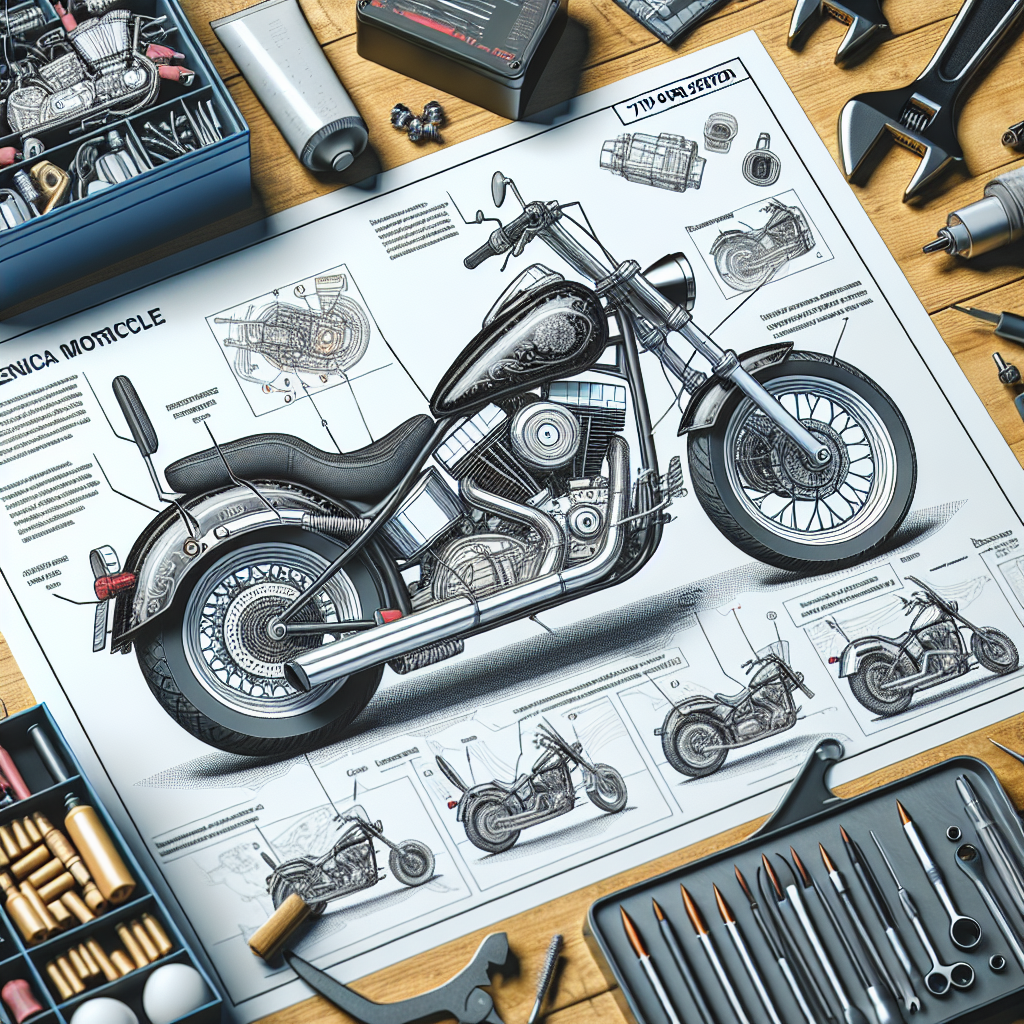
Owning a 2024 Harley-Davidson motorcycle is more than just possessing a machine; it’s about embracing a lifestyle of freedom and adventure. One of the crucial components of your Harley-Davidson is the tip-over sensor. This small yet significant device ensures your bike’s steadiness and safety. Whether you’re a DIY enthusiast or simply interested in knowing more about your motorcycle, this guide will walk you through locating the tip-over sensor on your 2024 Harley-Davidson.
Understanding the Tip Over Sensor
The tip-over sensor, also known as the bank angle sensor, is vital in maintaining your Harley’s functionality and safety. This device automatically shuts off the engine when it detects an excessive lean angle, preventing potential damage. Knowing how to find and possibly troubleshoot this sensor can save you a lot of time and money.
What is a Tip Over Sensor?
A tip-over sensor is an electronic device equipped with an accelerometer to measure the motorcycle’s angle. If the tilt exceeds a specific threshold, the sensor signals the engine to shut down, preventing further tilting and protecting both the rider and the motorcycle.
Why is it Important?
Locating and understanding your tip-over sensor can help prevent mishaps. For instance, if the sensor malfunctions, it could mistakenly shut down your engine or fail to cut off the engine during a critical lean.
Tools You Will Need
Before you start the process, make sure you have the necessary tools:
- Screwdrivers (Philips and flat-head)
- Allen wrenches
- Ratchet and socket set
- Flashlight
- Owner’s manual
These tools will assist you in removing different components to access the tip-over sensor.
Step-by-Step Guide to Locating the Tip Over Sensor
Step 1: Prepare Your Workspace
Ensure your motorcycle is on a stable stand to prevent it from tipping over during your work. Clear your workspace of any clutter. Make sure you have adequate lighting – a flashlight or a headlamp can be extremely useful.
Step 2: Remove the Seat
The first physical component you’ll need to remove is the seat. Using your Allen wrench, unscrew the bolts holding down the seat. Carefully lift the seat off, and set it aside.
Step 3: Locate the Main Wiring Harness
Under the seat, you’ll find the main wiring harness. This is a bundle of wires that connects various electronic components of your motorcycle. Carefully follow the wiring to beneath the fuel tank area.
Step 4: Remove the Fuel Tank (If Necessary)
Depending on your Harley model, you may need to remove the fuel tank to gain better access. Using your ratchet and socket set, unscrew the bolts securing the fuel tank. Disconnect any fuel lines cautiously to prevent spills and potential hazards.
Step 5: Spot the Tip Over Sensor
The tip-over sensor is usually a small, rectangular module connected to the wiring harness. It is often located near the frame or under the fuel tank. Look for a device attached via a clip or small bolts.
Step 6: Verify the Sensor
Ensure you’ve correctly identified the tip-over sensor. Refer to your owner’s manual to cross-check the part number and description.
Step 7: Reassemble Your Motorcycle
After checking or addressing any issues with the sensor, reassemble your motorcycle by reversing the steps. Make sure all bolts and screws are tightly secured, and all connections are correctly re-established.
Troubleshooting Common Issues with Your Tip Over Sensor
While locating your tip-over sensor, you might encounter some issues. Here’s how to troubleshoot common problems:
Sensor Malfunction
A malfunctioning sensor might shut down the engine inaccurately or fail to work when needed. Use a multimeter to check the voltage and continuity of the sensor.
Loose Connections
A common issue can be loose connections. Ensure all wiring is securely attached to the sensor and no cables are frayed or damaged. Tighten any loose connections using the appropriate tools.
Faulty Sensor Replacement
If your sensor is beyond repair, you might need to replace it. Here’s a brief guide on replacement:
- Disconnect the faulty sensor.
- Compare the new sensor with the old one to ensure compatibility.
- Connect the new sensor to the wiring harness.
- Secure it in place with clips or bolts.
Diagnosing with a Professional
If you’re unable to diagnose the issue yourself, it’s advisable to consult a professional mechanic. They have specialized tools and expertise to handle advanced diagnostics efficiently.
Maintaining Your Tip Over Sensor
Regular Inspections
Regular inspections can help detect issues before they become serious. Check the sensor every few months to ensure it’s working correctly.
Keep It Clean
Make sure the area around the sensor is clean. Dust and debris can affect its functionality, so a regular cleaning regimen is advisable.
Routine Mechanic Visits
Routine visits to a certified Harley-Davidson mechanic can help ensure the sensor is in optimum condition. They can provide more in-depth inspections and advanced troubleshooting.
Software Updates
Keep your motorcycle’s software updated. Sometimes, malfunctions are due to outdated software that can be resolved with a simple update.
Additional Resources
For more detailed breakdowns on various components and maintenance tips for your Harley-Davidson, consider visiting these resources:
Frequently Asked Questions
1. Can I locate the tip-over sensor without removing the seat?
In most cases, the seat needs to be removed to access the wiring harness and sensor. However, some models might offer easier access.
2. What happens if the tip-over sensor fails?
If the sensor fails, it might not cut off the engine when needed, potentially causing damage or posing a safety risk.
3. How often should I check the tip-over sensor?
It’s a good practice to check the sensor every few months or during routine maintenance.
4. Can I replace the tip-over sensor myself?
Yes, with the right tools and guidance, you can replace the sensor yourself. However, consulting a mechanic for installation can ensure proper functioning.
By following this comprehensive guide, you should be able to locate the tip-over sensor on your 2024 Harley-Davidson confidently. Regular maintenance and understanding of your motorcycle’s essential components are crucial to ensuring safe and enjoyable rides.